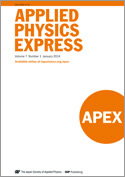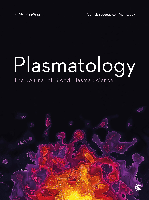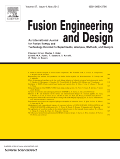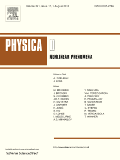
CONTRIBUTIONS TO PLASMA PHYSICS
Scope & Guideline
Unveiling the Dynamics of Plasma Physics
Introduction
Aims and Scopes
- Theoretical and Computational Plasma Physics:
The journal publishes studies that develop and apply theoretical models and computational techniques to simulate plasma behavior and interactions. This includes kinetic and fluid models, as well as hybrid approaches to understand complex plasma phenomena. - Experimental Plasma Research:
Research articles that report experimental findings in plasma physics, including the development of new plasma devices, diagnostic techniques, and the investigation of plasma-material interactions are a core focus. This emphasizes the journal's commitment to bridging theory and practice. - Plasma Applications in Technology and Industry:
Papers that explore the applications of plasma technology in various fields such as materials processing, environmental science, and medical applications are prevalent. This includes studies on plasma jets, surface modification, and plasma-assisted chemical processes. - Fundamental Plasma Physics:
The journal covers fundamental research on plasma properties, wave phenomena, and instabilities. This includes studies on nonlinear dynamics, collective behavior in plasmas, and the effects of external fields on plasma stability. - Interdisciplinary Approaches to Plasma Science:
Research that integrates plasma physics with other scientific fields, such as astrophysics, quantum mechanics, and materials science, is highlighted. This interdisciplinary approach enhances the understanding of complex plasma systems and their applications.
Trending and Emerging
- Quantum Plasma Physics:
There is a growing trend in research focusing on the quantum aspects of plasma physics, including quantum turbulence, quantum effects in dense plasmas, and the interaction of quantum particles in plasma environments. This reflects a broader interest in understanding plasma at a fundamental, quantum level. - Machine Learning and AI in Plasma Research:
The integration of machine learning and artificial intelligence techniques into plasma diagnostics and modeling is on the rise. Researchers are increasingly utilizing these technologies for predictive modeling, data analysis, and enhancing simulation accuracy. - Plasma-Material Interactions:
Studies examining the interactions between plasma and various materials, particularly in the context of fusion devices and advanced manufacturing, are gaining traction. This includes research on erosion, deposition, and the effects of plasma on material properties. - Nonlinear Dynamics and Instabilities:
Research exploring nonlinear dynamics, wave phenomena, and instabilities in plasmas is becoming more prominent. This includes the study of solitons, shock waves, and their applications in both astrophysical and laboratory plasmas. - Environmental and Energy Applications of Plasmas:
There is an increasing focus on the applications of plasma technology in environmental remediation, energy production, and sustainability. This includes research on plasma-assisted combustion, waste treatment, and the development of plasma-based energy systems.
Declining or Waning
- Classical Plasma Theories:
There has been a noticeable decrease in papers focusing solely on classical theories of plasma behavior without considering modern advancements or experimental validations. Research is increasingly leaning towards more complex models that incorporate quantum effects or non-thermal distributions. - Basic Ion Dynamics:
Studies that primarily focus on basic ion dynamics in uniform plasmas appear to be waning. This could be due to a shift towards more complex systems that include multi-species interactions or the influence of external fields. - Low-Temperature Plasma Studies:
Research centered on low-temperature plasmas, particularly in industrial applications, has seen a decline. As the field progresses, there is a growing emphasis on high-temperature and fusion-related plasma research, overshadowing traditional low-temperature studies. - Dusty Plasma Research:
While still of interest, the volume of research specifically focusing on dusty plasmas has decreased. This may be attributed to the emergence of more pressing topics in plasma physics that are gaining more attention, such as magnetized and quantum plasmas.
Similar Journals

Applied Physics Express
Bridging Academia and Industry in Physics ResearchApplied Physics Express, published by IOP Publishing Ltd, is a leading journal that focuses on the rapid dissemination of research in applied physics, aimed at both academia and industry professionals. Operating from Japan, this prestigious journal features a broad scope within the domains of engineering and physics and astronomy, earning a significant place in the research community, as evidenced by its Q2 ranking in both disciplines for 2023. With a commitment to excellence, Applied Physics Express provides a platform for authors to share their innovative findings, promoting collaboration and advancement in the field. Its impact is further highlighted by its solid performance in Scopus rankings, featuring prominently within the engineering and physics categories. Although the journal does not currently operate under an open access model, it is dedicated to ensuring that high-quality research is accessible to its readers. Researchers, students, and professionals can find invaluable insights and cutting-edge studies within its pages, making it an essential resource for those engaged in applied physics and its interdisciplinary applications.

Bulletin of the Lebedev Physics Institute
Empowering scholars to push the boundaries of knowledge.Bulletin of the Lebedev Physics Institute is a peer-reviewed journal dedicated to advancing the field of physics and astronomy, published by PLEIADES PUBLISHING INC. With a print ISSN of 1068-3356 and an e-ISSN of 1934-838X, this journal has been an essential platform for disseminating significant research findings since its inception in 2009. It continues to provide insight into various areas of general physics and astronomy, and consistently aims to foster innovative discussions among researchers and scholars. Although currently positioned in the Q4 category within the 2023 Scopus rankings, it serves a vital role in linking emerging trends with established research, catering to a global audience seeking to explore complex concepts within the field. By contributing to the body of knowledge, the Bulletin supports academic growth and collaboration across diverse sectors. Despite its challenges in ranking, the journal’s unique perspectives and ongoing publications underscore its commitment to pushing the boundaries of scientific inquiry in the United States and beyond.

Plasmatology
Elevating the Discourse in HematologyPlasmatology, published by SAGE Publications Ltd, is a pioneering open-access journal devoted to the field of hematology, focusing on the latest advancements and research in plasma science and its applications. Established in 2021, this journal aims to foster knowledge exchange among researchers, practitioners, and students by providing a platform for sharing innovative studies and reviews. While currently positioned in the Q4 quartile for hematology and ranking #111 in the Scopus database, Plasmatology is dedicated to enhancing its influence and reflecting the dynamic nature of hematological research. With access options freely available to all, the journal encourages a collaborative approach to address the challenges and developments in the field. Based in the United Kingdom, Plasmatology is an emerging resource for anyone interested in advancing their understanding and involvement in plasma research.

PHYSICS OF PLASMAS
Shaping the Landscape of Plasma Physics ResearchPhysics of Plasmas is a premier peer-reviewed journal published by AIP Publishing, focusing on the vital and interdisciplinary field of plasma physics. With an ISSN of 1070-664X, this journal presents cutting-edge research that spans a wide array of topics including fusion energy, astrophysical plasmas, and industrial applications of plasma technologies. As a recognized leader in the field, it holds a prestigious Q1 ranking in Condensed Matter Physics, reflecting its high impact and quality of published work. The journal's scope encompasses both fundamental studies and innovative applications, serving as an essential resource for researchers, professionals, and students alike. Although it does not offer open access, its rigorous selection process ensures that only the most significant contributions are highlighted. With a convergence of expertise from 1994 to 2024, Physics of Plasmas continually shapes the future of plasma research and technology, making it a critical avenue for sharing discoveries and advancements in this dynamic area of physics.

JOURNAL OF FUSION ENERGY
Transforming theories into practical applications in energy science.The Journal of Fusion Energy, published by Springer, stands as a significant platform for advancing the field of nuclear energy and high-energy physics. With an ISSN of 0164-0313 and an E-ISSN of 1572-9591, this journal has been pivotal for researchers since its inception, tracking the latest innovations and research breakthroughs from 1981 to 1983 and continuing its legacy from 1985 to 2024. Recognized as a Q2 journal in both the Nuclear and High Energy Physics and Nuclear Energy and Engineering categories for 2023, it boasts a respectable Scopus ranking that places it among the top journals in its field—ranking #37 out of 77 in Nuclear Energy and Engineering and #50 out of 87 in Physics and Astronomy. Although it does not offer open access options, the journal remains a crucial resource for professionals, researchers, and students striving to stay informed on the pivotal developments in fusion energy research. Its comprehensive articles are designed to engage the academic community, paving the way for new paradigms in energy production and sustainability.

Ukrainian Journal of Physics
Pioneering Research for Tomorrow's InnovationsUkrainian Journal of Physics, published by the Bogolyubov Institute for Theoretical Physics of the National Academy of Sciences of Ukraine, stands as a significant platform for the dissemination of research in the dynamic field of physics. With its ISSN 2071-0186 and E-ISSN 2071-0194, the journal aims to foster academic dialogue and innovation among researchers, professionals, and students alike. Recognized with a Scopus ranking that places it in the 26th percentile, the journal offers an array of contributions spanning various domains, including general physics and astronomy. Although currently categorized in the Q3 quartile for 2023, it seeks to elevate its scholarly impact while providing open access to its contents, facilitating wider availability and engagement. With a commitment to publishing high-quality research from 2007 to 2024, the journal embraces interdisciplinary approaches to physics, making it an invaluable resource for anyone dedicated to advancing their understanding and exploration of physical sciences.

DOKLADY PHYSICS
Advancing the Frontiers of Physics and Engineering.DOKLADY PHYSICS is a prominent academic journal dedicated to advancing knowledge in the fields of computational mechanics, mechanics of materials, and general physics and astronomy. Published by MAIK NAUKA/INTERPERIODICA/SPRINGER, this journal has established itself as a crucial resource for researchers and professionals keen on exploring the intricacies of physical phenomena and engineering applications. With its ISSN 1028-3358 and E-ISSN 1562-6903, DOKLADY PHYSICS has been contributing to scientific discourse since its inception in 1996 and continues to provide a platform for innovative research up to 2023. Despite its current Q3 ranking in several key categories, the journal maintains an inclusive approach, striving to influence both academic and practical aspects of its fields. While the journal may not be open access, it remains a vital publication for those interested in high-quality research, as reflected in its Scopus ranking positions across various engineering and physics categories.

FUSION ENGINEERING AND DESIGN
Advancing the Future of Fusion Engineering.FUSION ENGINEERING AND DESIGN is a premier scientific journal published by Elsevier Science SA, dedicated to advancing the field of fusion engineering, materials science, and related disciplines. Established in 1985 and running through 2024, this journal features cutting-edge research that spans multiple categories, including Civil and Structural Engineering, Mechanical Engineering, Materials Science, and Nuclear Energy and Engineering, holding a notable Q2 quartile ranking in each field as of 2023. Catering to a global audience of researchers and professionals, FUSION ENGINEERING AND DESIGN emphasizes the importance of interdisciplinary collaboration and innovative technology in tackling the complex challenges associated with fusion energy. Although it does not offer Open Access, the journal remains an essential resource for those seeking to stay abreast of developments that could shape the future of energy solutions and engineering methodologies. With a dedicated editorial board and a commitment to high-impact publication, this journal serves as a vital platform for disseminating transformative ideas and driving forward the scientific dialogue in fusion engineering.

PHYSICA D-NONLINEAR PHENOMENA
Unraveling Complexities in Physics and MathematicsPHYSICA D-NONLINEAR PHENOMENA, published by Elsevier, serves as a leading academic journal at the forefront of the fields of Applied Mathematics, Condensed Matter Physics, Mathematical Physics, and Statistical and Nonlinear Physics. With an impressive track record since its inception in 1980, this journal has maintained a distinguished presence, noted for its Q1 ranking in multiple categories in 2023, showcasing its impact and relevance in the scientific community. The journal's commitment to advancing knowledge is reflected not only in its rigorous peer-reviewed articles but also through its high visibility and accessibility, aiding researchers, professionals, and students in staying abreast of the latest developments in nonlinear phenomena. Located in Amsterdam, Netherlands, PHYSICA D-NONLINEAR PHENOMENA is essential for those seeking to explore innovative research and contribute to groundbreaking discoveries in the realm of nonlinear dynamics.

PLASMA SCIENCE & TECHNOLOGY
Unraveling the Mysteries of Plasma BehaviorPLASMA SCIENCE & TECHNOLOGY is a distinguished academic journal published by IOP Publishing Ltd, focusing on the realm of condensed matter physics. With its inception in 2000 and continuing through 2024, the journal serves as a vital platform for disseminating groundbreaking research and developments in plasma science, encompassing experimental and theoretical studies that advance our understanding of plasma behavior and its applications. Although the journal is not open access, its insights are invaluable for researchers, professionals, and students devoted to the intricate physics of plasmas, particularly given its respectable Q2 quartile ranking within its category as of 2023 and a notable Scopus rank that places it within the 44th percentile among its peers. Published from the United Kingdom, the journal aims to foster collaboration and innovation in this essential field of study.